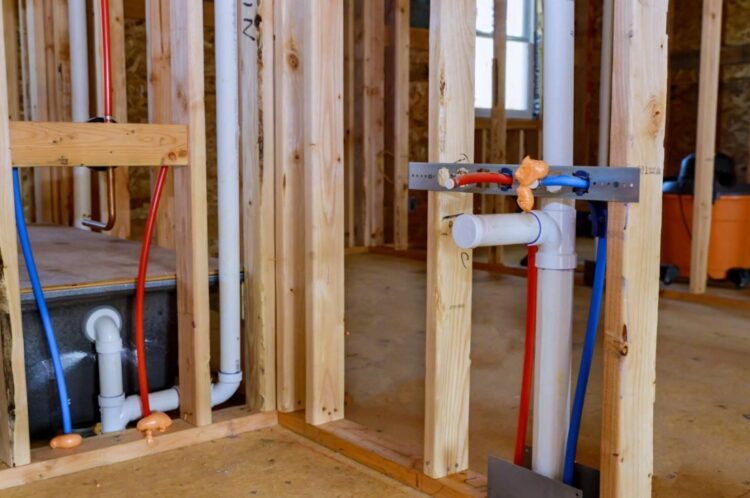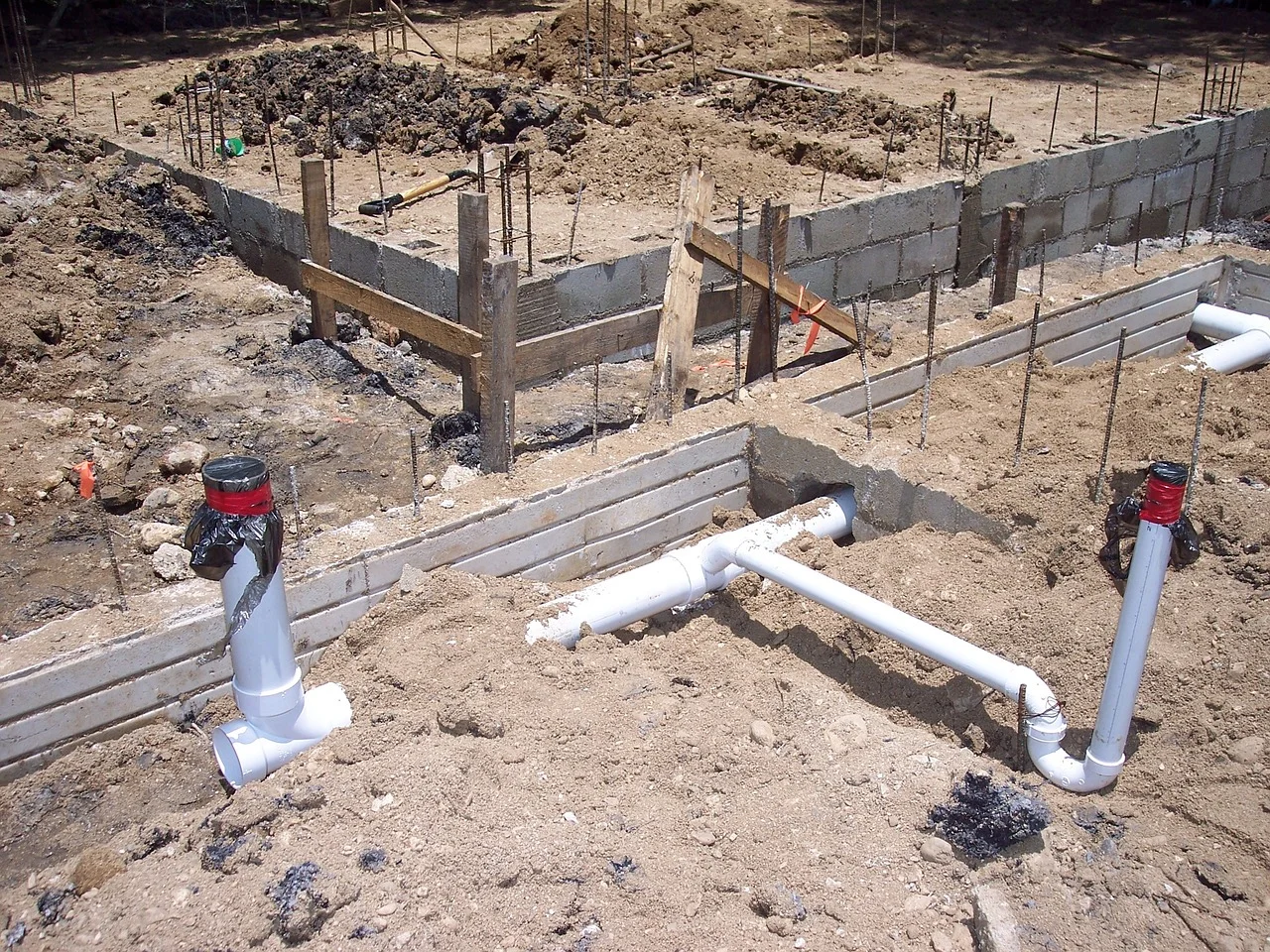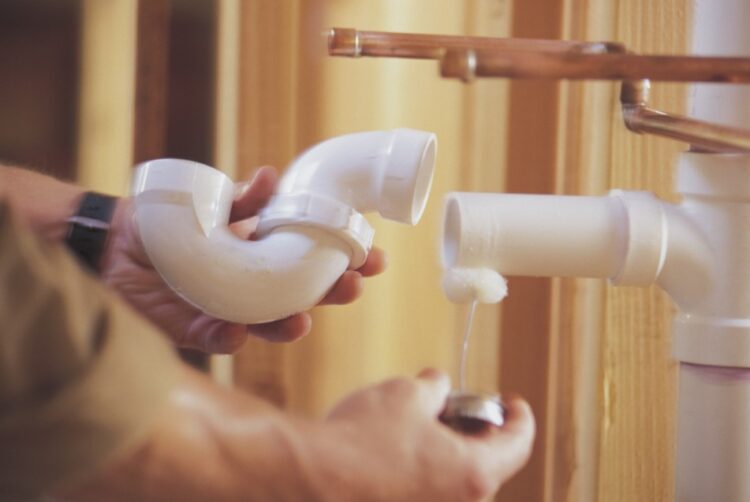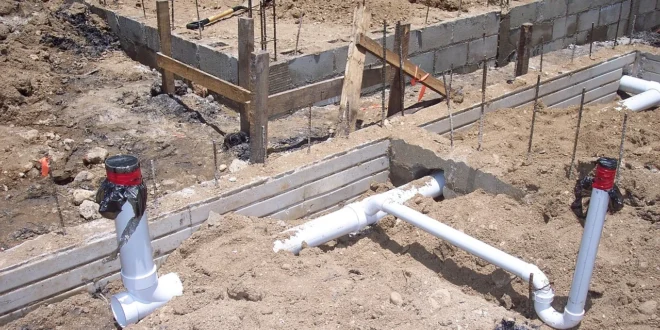In the world of home construction, there are heroes that often go unnoticed. One such hero is rough in plumbing. This crucial phase, though behind the scenes, lays the groundwork for our homes’ plumbing systems.
While cabinets, fixtures, and tiles get most of the attention, it’s the unseen work below floors and behind walls that truly ensures a home functions seamlessly.
What is Rough In Plumbing?
At its core, rough in plumbing refers to the initial installation of the plumbing system’s main parts. This phase takes place before walls are closed up and before finishing touches are added. It’s a stark contrast to finish plumbing, where fixtures like sinks, showers, and toilets are installed. The rough in phase deals with the foundational framework, ensuring everything is in place for the final installations.
The Components of Rough In Plumbing
Several elements come together during this phase:
- Pipes ─ The veins of our home, pipes carry water in and out. There are supply pipes that bring fresh water in and waste pipes that carry used water out.
- Fittings ─ These are essential for connecting pipes. Think elbows, tees, and other joinery components that ensure the plumbing network functions cohesively.
- Stubs ─ These short pipes extend from the main system and will later be connected to fixtures. It’s the preliminary setup for where fixtures will be placed.
The Importance of Accurate Rough In Plumbing

Precision is key. Ensuring that rough in plumbing is accurate means preventing future complications. It dictates the functionality of the entire system and is crucial for passing building inspections. Missteps in this phase can result in costly repairs, so it’s paramount to get it right from the start.
The Process ─ Step by Step
Mapping
Before any work begins, plumbing blueprints are laid out to identify where pipes and fixtures will be placed.
Installing Main Lines
The primary arteries of the system, like the main water supply and sewer lines, are put into place.
Setting Fixtures’ Locations
Stubs are set up to determine the eventual locations of sinks, bathtubs, and toilets.
Common Challenges and Solutions

Every construction project faces challenges. With rough plumbing, common issues include:
- Structural obstacles ─ Sometimes, a beam or a foundational element may stand in the way. Solutions often involve strategic rerouting.
- Design changes ─ Occasionally, plans change. An experienced plumber can adapt to new designs while ensuring the system remains functional.
- Balancing pressures ─ It’s essential that water flows at the right pressure and that waste is drained effectively, avoiding potential blockages or leaks.
Tips for Homeowners
For those embarking on a construction or renovation journey, consider the following:
- Prioritize experience ─ When hiring, seek plumbers renowned for their rough expertise.
- Look for signs ─ A well-executed rough-in job is characterized by neat, organized piping, and clear labeling.
- Maintenance ─ Even in the early stages, ensure that the plumbing is maintained. Regular checks can spot and rectify potential issues early on.
The Evolution of Rough In Plumbing Techniques

Over the decades, rough plumbing has seen significant evolutions. Initially, cast iron and galvanized steel were the primary materials used for pipes. However, with advancements in technology and a better understanding of material longevity and health implications, the industry has largely transitioned to using PVC, CPVC, and PEX.
These materials offer durability, are resistant to corrosion, and reduce the risk of water contamination. Modern techniques also emphasize eco-friendliness, optimizing water usage, and minimizing wastage, which not only benefits homeowners in reduced bills but also aids in global water conservation efforts.
The Interplay between Design and Plumbing
A harmonious balance between interior design and rough plumbing is crucial. Architects and interior designers often collaborate closely with plumbers during the rough in phase. This ensures that while the home meets aesthetic goals, it doesn’t compromise on functionality.
For instance, a bathroom might be envisioned in a particular corner of the house, but without proper plumbing considerations, it could be prone to issues like low water pressure or ineffective drainage. Hence, the symbiotic relationship between design and plumbing underlines the fact that a home’s beauty is as much about its visible features as its hidden, foundational elements.
Rough in plumbing, though hidden from view, is the backbone of our homes’ water systems. It’s an unsung hero, deserving of recognition and careful consideration. As homeowners and builders, prioritizing this phase ensures our homes are not just beautiful, but also functionally robust. After all, the true beauty of a home lies in both its aesthetics and its foundational integrity.
 Hi Boox Popular Magazine 2024
Hi Boox Popular Magazine 2024



